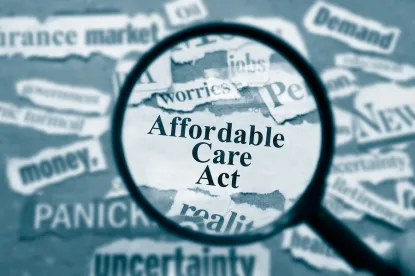It’s official. The IRS has finally begun the process of collecting penalties under the Affordable Care Act’s (“ACA”) employer shared responsibility provisions, better known as the “employer mandate.” The IRS has started mailing out letters to employers that potentially owe an employer shared responsibility payment (“ESRP”) for the 2015 calendar year. These letters follow the format of the IRS’s recently released template letter, Letter 226-J. The letter outlines the IRS’s preliminary calculation of the ESRP owed by the employer based on information contained in the ACA tax forms filed by the employer and the individual income tax returns filed by employees.
If you receive Letter 226-J from the IRS, you will need to act very quickly to either submit payment or dispute the preliminary calculation. The IRS is allowing 30 days from the date of the letter (not the date the letter is received) for the employer to object to the preliminary determination, explain the basis for the objection, and submit supporting documentation. Employers will have the opportunity to request a conference with the IRS prior to the 30-day response deadline. Failure to respond within 30 days (either by paying or objecting to the preliminary determination) will result in a Notice and Demand from the IRS demanding full payment of the ESRP, subject to interest and lien enforcement.
Background
Effective January 1, 2015, many employers became subject to the ACA’s employer mandate, which requires covered employers to offer affordable health coverage to their full-time employees (generally, those working 30 or more hours per week) or potentially be subject to an ESRP. An employer will only owe an ESRP if a full-time employee received a premium tax credit for insurance coverage purchased through a marketplace and the employer failed to offer that employee affordable health coverage. Employers report their offers of coverage through IRS Forms 1094-C and 1095-C and the IRS will use that information, along with information on employees that received a marketplace insurance premium tax credit to determine whether an employer may be liable for an ESRP.
Employer Takeaways
-
ACA reporting is done on an entity by entity basis, so the mailroom at each of your affiliated companies should be on the lookout for a Letter 226-J from the IRS. The IRS often sends correspondence without addressing it to a particular individual or department, and getting the Letter 226-J into the right hands quickly will be critical.
-
If you receive a Letter 226-J, you will only have 30 days from the date of the Letter to respond. You should identify the person responsible for a response, the location of the data that you might need (such as enrollment and payroll records) and assistance you might be need from outside vendors.
-
Even employers that offer all “full-time” employees affordable health coverage could receive a Letter 226-J. This could happen for a number of reasons – an employee or independent contractor providing services to your company may complete a marketplace insurance coverage application incorrectly, the coverage you offered an employee may be unaffordable for purposes of allowing an employee to get subsidized marketplace coverage but not for penalty purposes, or you may have errors in your 1095-C reporting.





 />i
/>i

